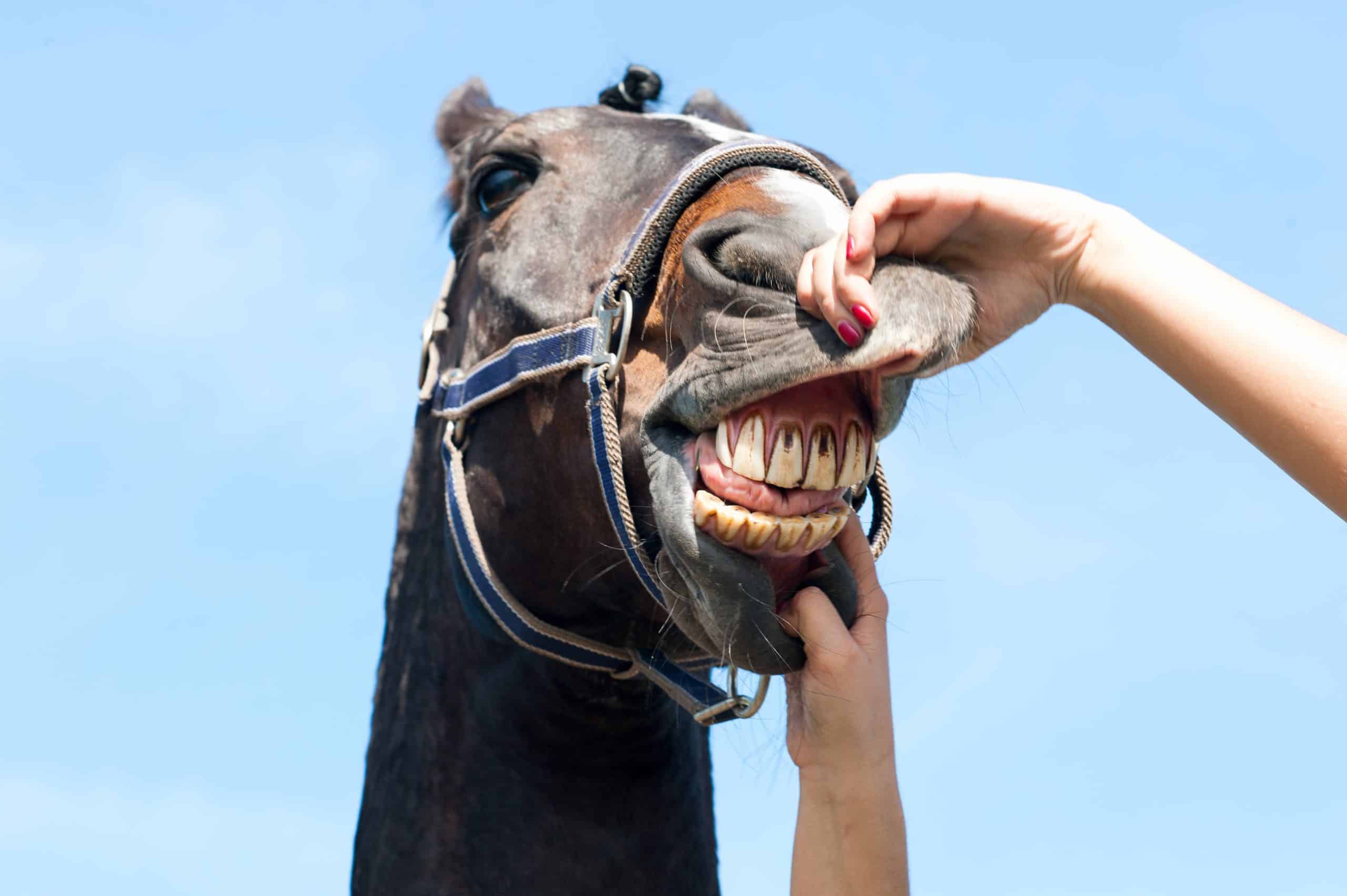When it comes to storylines and movies, you know what I love? Metaphors, allegories, and hidden themes that make you wonder. Don’t get me wrong, straight forward thinking is great for teaching, but it’s just more exciting when something is said in a creative way. And so that got me thinking. What’s the most commonly used phrase related to teeth that makes you scratch your head? Well with a little research…I discovered the idiom, “long in the tooth” is high on that list.
Most people have heard the term, but not everyone knows exactly what it means. Long in the tooth? What the heck does that mean?
In this article, we’ll talk about the meaning of long in the tooth. We’ll answer if teeth really do get longer, and explain the origin of the phrase, long in the tooth, as told by a dentist who is obviously way too curious.
Long in the Tooth Meaning
What does long in the tooth mean? Well, the phrase relates to aging. When someone uses the term “long in the tooth,” it’s a way of saying someone or something is on in years. It’s similar to the phrase, “over the hill.”
Oh and before you think about using this term. I’ll stop you right there. There’s a little more you must know first. Here are some interesting factoids.
Age is only significant in describing one point in time to another.
Studies show that aging is separated between socioemotional competence and actual health.
In other words, age is less about the number and more about how we feel. So just like a 2-year-old would look at a 6-year-old as “old,” a 110-year-old would look at a 75-year-old as young. It’s all relative.
And you know what’s even more interesting? It’s also one of the few things that everyone has in common. We all share the process of aging.
In fact, I would challenge you to argue if anything is truly old, long in the tooth, or over the hill. Maybe it’s all just an illusion of our perspective at that point in time?
So before you go thinking you’re “long in the tooth,” try to think of it from a different perspective. You might be surprised at how big an impact perception has on how we feel.
Long in the Tooth Origin

The idiom “long in the tooth” is believed to stem from the trade of horses. You know that term “don’t look a gift horse in the mouth?” Well, that has to do with how horses are evaluated for sale. Apparently, it’s not just about an auctioneer talking really fast in front of a group of bidders with paddles. By looking in the horse’s mouth, it helps give a sense of the age and health of the animal.
As the horse gets older, their teeth become longer. Therefore, the horse’s teeth have always been a natural lie detector test in the horse trade. The length of a horse’s teeth gives an approximate sense if the seller is being truthful about the horse’s true age.
Okay, so a horse with long teeth is older. Got it. But is it really?
Is a human with longer teeth older? Let’s explore this a little more.
Do Our Teeth Really Get Longer as we Age?
There is some truth to the saying long in the tooth, but it’s different than you might think. The teeth do not actually grow longer as we age. However, the teeth do have a tendency to appear longer with age.
The reason why has less to do with the teeth, and more to do with the gums….specifically the bone underneath them.
There are two primary factors that make the teeth look longer with age: gum recession and bone loss from periodontal disease.
Think of it this way. The teeth are the same length, you’re just seeing more of the tooth if structures around them erode. An analogy is a window with a shorter curtain. The window is the same size but it gives the illusion it’s longer if the curtain is shorter. That’s how gum and bone loss affect the cosmetics of the teeth.
And before you go thinking your doomed to have aging gums, you should know that humans have control over these factors—so you don’t have to settle for accepting “long in the tooth.” Let’s explore what causes gum recession and periodontal disease.
The Causes of Gum Recession
There are a few factors that lead to receding gums. Many of them are controllable, so check out the list below to understand how to avoid the causes of gum recession:
- Brushing too hard over the gums
- Teeth grinding, also called bruxism
- Trauma from an accident
- History of orthodontics to correct severe issues
- Genetics from thin bone structure
Periodontal Disease and the Cause of it
Periodontal disease is a chronic infection of the gums and bone around the teeth. The process typically involves inflammation of the gums and bone which progresses to cause deterioration.
The four stages of gum disease are gingivitis, slight periodontitis, moderate periodontitis, and severe periodontitis.
Easy enough right? The key concept is that the condition progresses.
Each state generally indicates the amount of bone and gum lost at that point, with gingivitis being the only stage where there are signs of inflammation and no damage yet.
So as periodontal disease progresses, more gum and bone is lost. And since periodontal disease happens over time as we age, it’s one of the factors of why the teeth look longer as we age, hence “long in the tooth.”
But as we talked about, periodontal disease is not a curse you cannot shake. There are things you can do to prevent the development and progression of it. Let’s look at a few:
- Practice good hygiene habits: Brush gently twice a day; floss at least once per day
- Avoid cigarette smoking
- Limit alcohol use
- Try breaking habits like grinding your teeth or speak with your dentist to find if there is a cause of your grinding
- Maintain a well-balanced diet
- Stay hydrated
- Maintain routine dental checkups at least every 6 months.
Long in the Tooth: The Story Behind The Tooth

So there you have it—an in-depth dive into the phrase “long in the tooth,” and why long teeth are associated with aging.
The key to understand is that aging is relative.
Not all elderly people have long teeth. However, you can bet the ones who have youthful smiles didn’t keep them by accident. They share similar habits of preventative planning.
So here’s the secret. You can reduce aging too. And the fact that you read this entire article is a good sign that you’re working toward that. Follow the tips to combat aging and be the best version of yourself.
So bravo to you! Now that you have a glimpse at the potential future, why not do what you can today… to make your future smile a little brighter?


